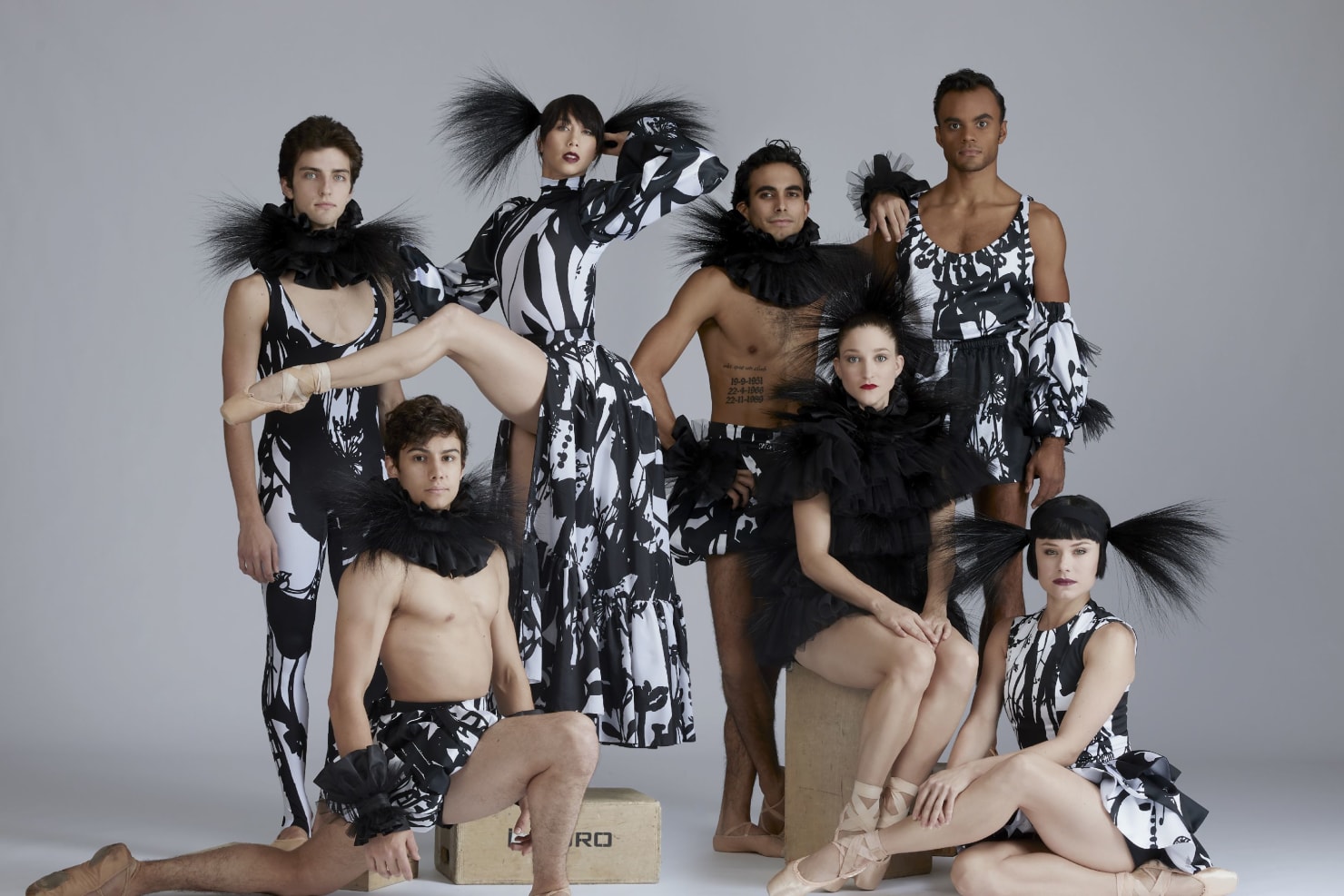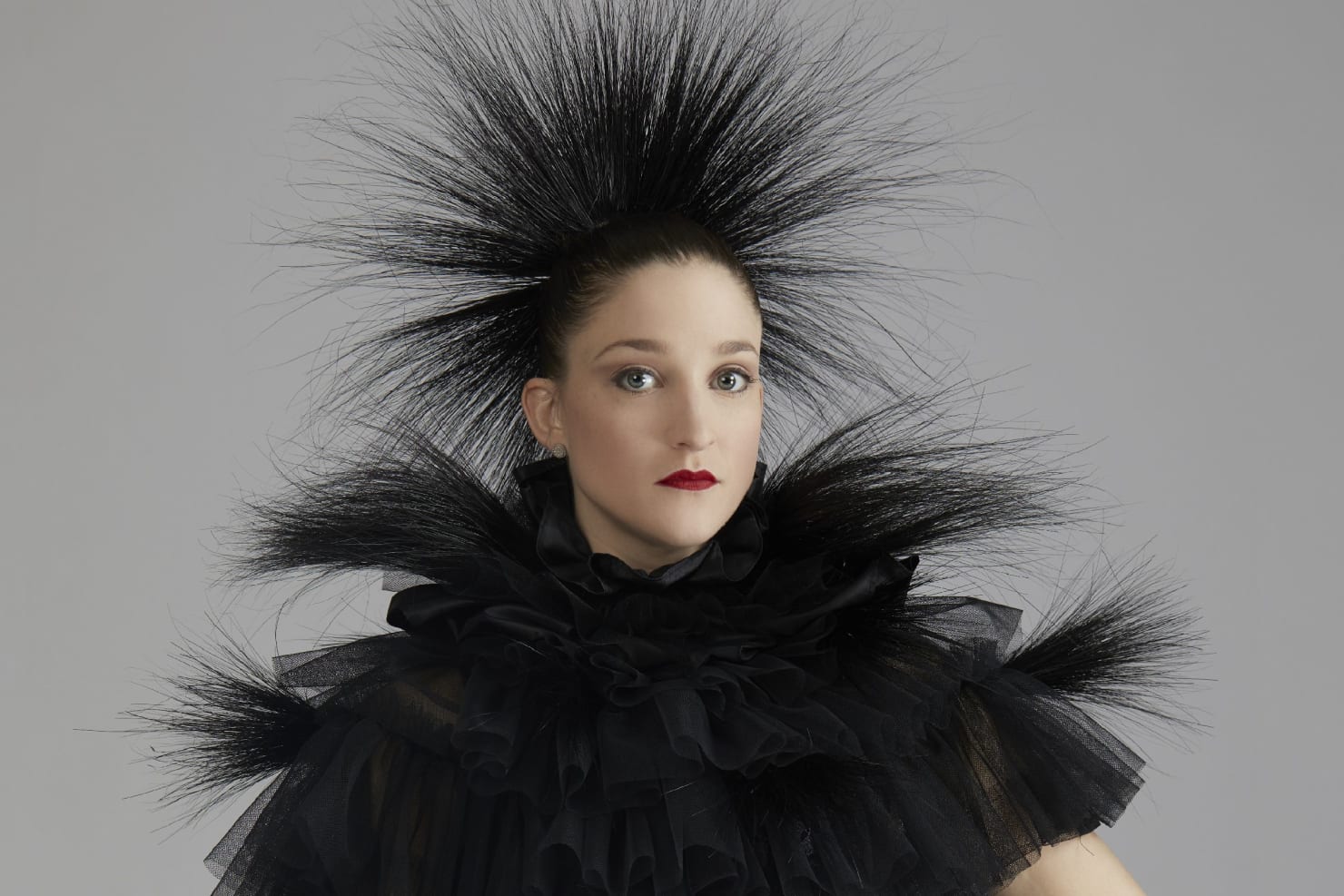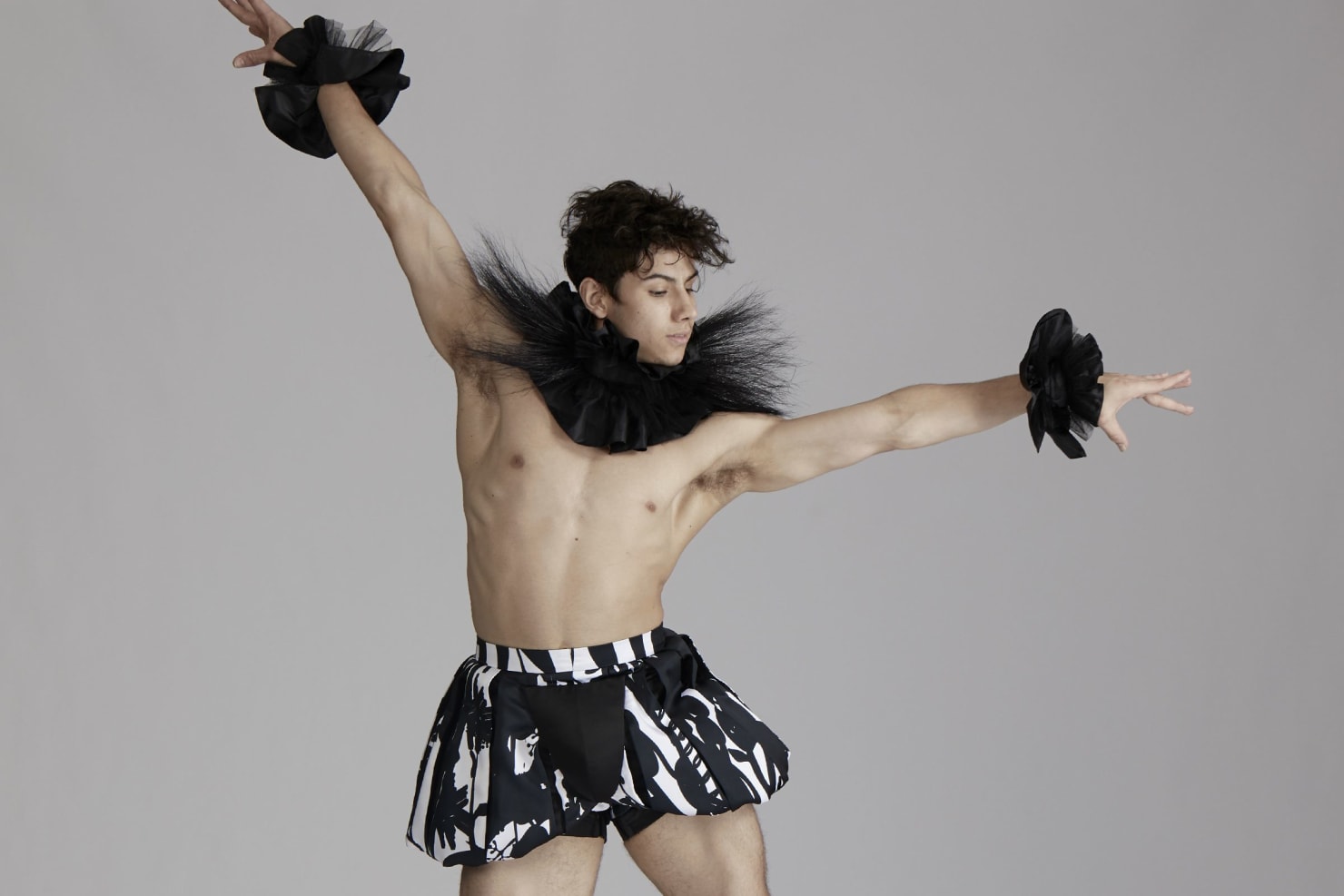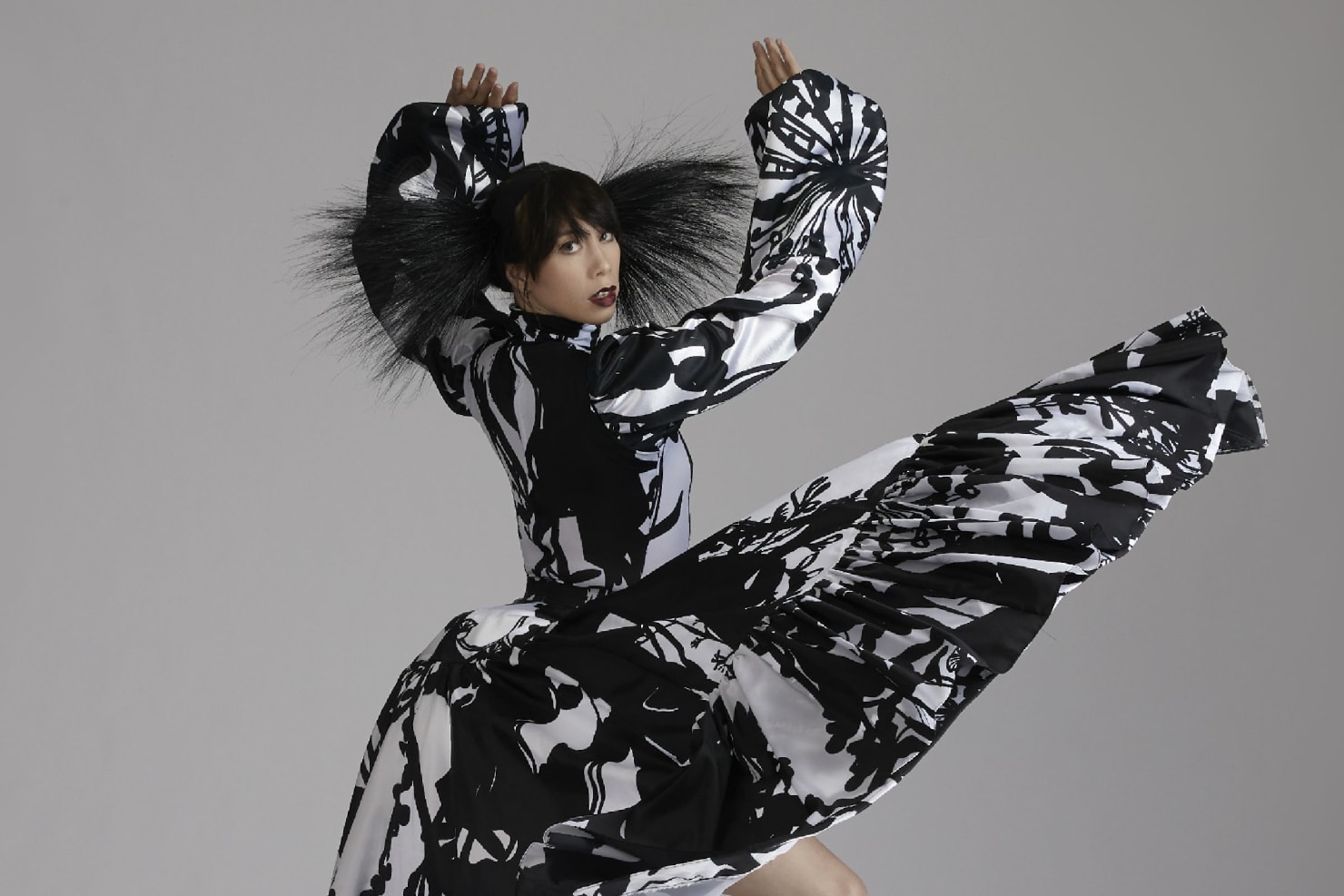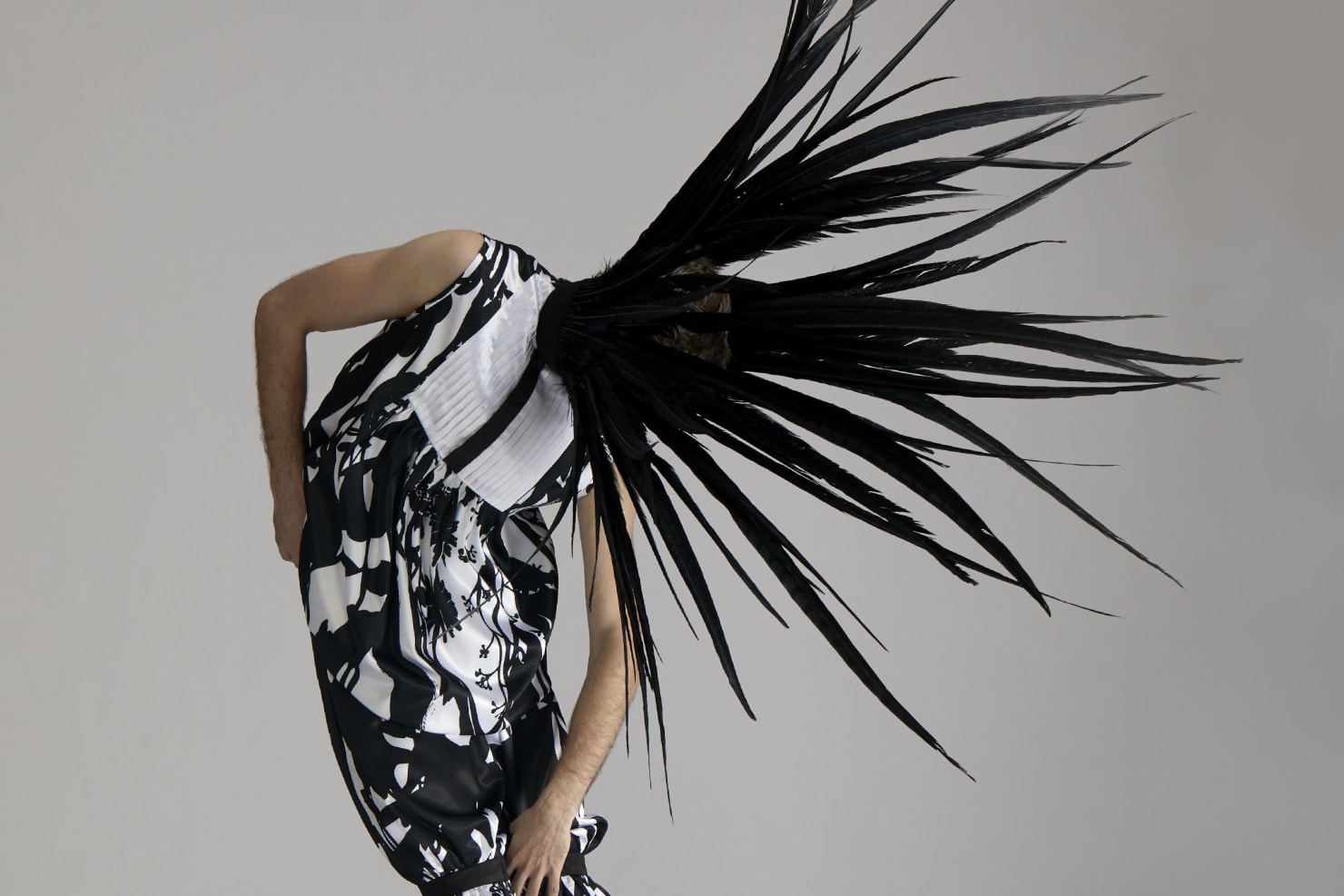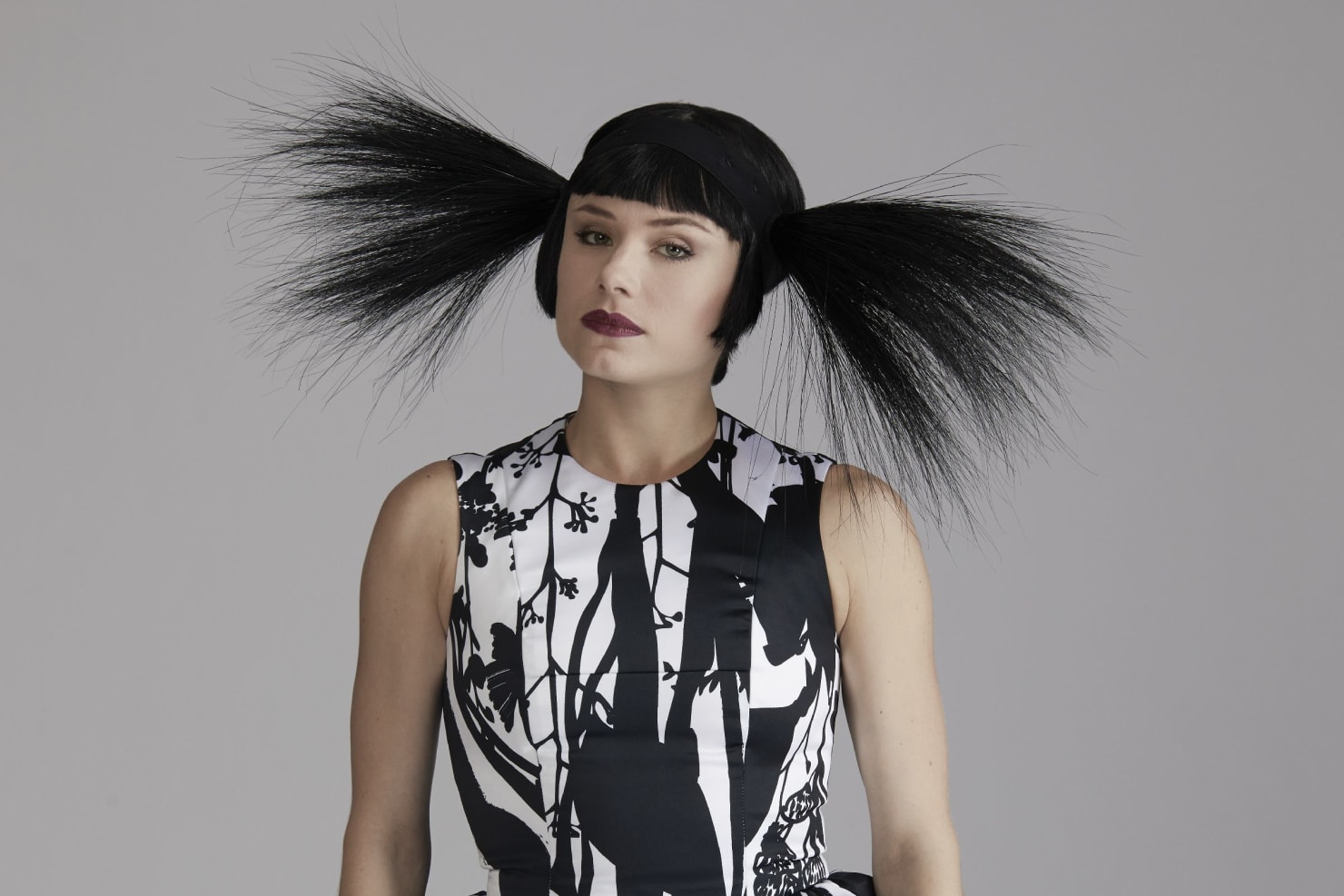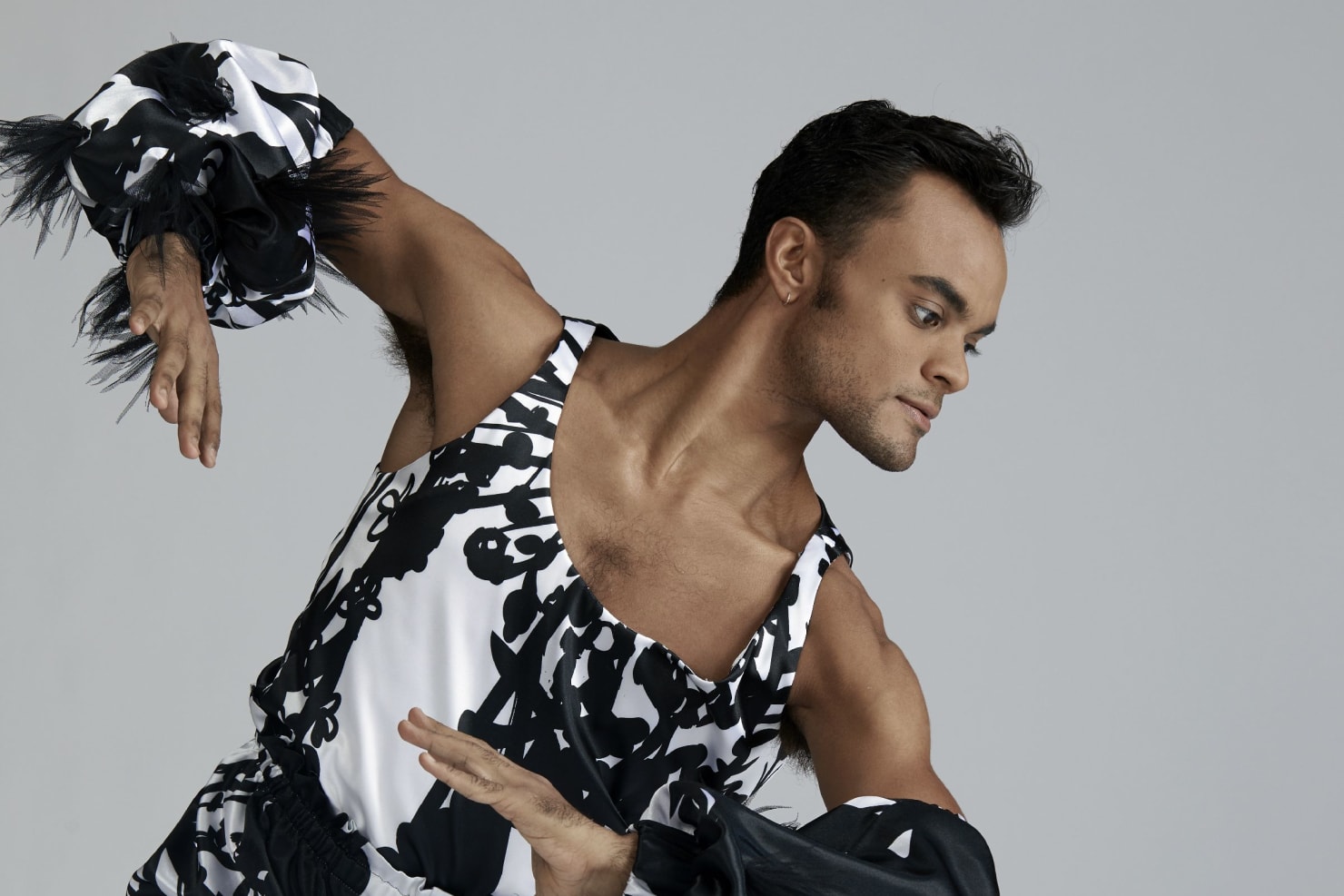
Kyle Abraham on The Runaway
, September 26, 2018
In a rehearsal room on the 8th Floor of the Rose Building on the Lincoln Center campus, choreographer Kyle Abraham, in a knit yellow cap and glasses, is explaining what he wants to Principal Dancer Taylor Stanley and then-Corps Member (now Soloist) Sebastián Villarini-Vélez. He's gesturing with his hands near his hips and telling them to hit a beat: "shaboom, shaboom." That was nearly the only note he had for the dancers after a run-through of the current version of the choreography — besides "When I don't have my glasses on, there's a fuzz all around you" — for the out-of-breath cast of his new ballet, The Runaway.
Abraham walks over to Corps Members Roman Mejia and Christopher Grant, who are taking a quick breather after pushing themselves in the rehearsal, and gives them a little cheer: "Yaaaay!" His assistant made a video of the full run-through, and Abraham was busy downloading it to his Macbook. "I have to send it to Giles Deacon," he explains. The British designer is making the costumes for Abraham's piece. At that point in mid-September of 2018, the two hadn't met in person yet.
Abraham is a critically acclaimed choreographer and dancer, whose work with his company A.I.M (or Abraham In Motion) has created its own space in dance. A MacArthur Grant winner in 2013, he's called his style "postmodern gumbo," and it's an inclusion of everything that he knows.
In a short interview between rehearsal and meetings, Abraham elaborates on the basis of his technique: "It's rooted in postmodern dance aesthetics and philosophies, with the inclusion of so many more dance forms. [I've] studied contemporary modern forms with key people like Kevin Wynn, Merce Cunningham Technique, Martha Graham, José Limón, some of the Skinner Release Techniques, and even ballet. I'm not a ballet body — by any means — but having all that inspiration then generates the material that I make."
Music has always been something that shaped Abraham's dancing, especially his history "in social dance," as he calls it. He started in hip-hop and club dance and describes himself as having been "a big rave kid" in his youth. "The thing about raves that I just loved is that even though people were doing these kind of codified dances of sorts, you didn't feel beholden to any of that and you could just move. With the music's repetition, it created a lot of space for variations and it really opened my eyes up to the possibilities of dance."
"So much of my expression is based in the torso," he continues. "That has been a big part of the breadth of my work, allowing the lower body to hold the rhythm, but then the spine can kind of dance on its own." His technique was in action earlier during the rehearsal as Stanley took over the room in an incredible, unearthly solo. It's one example of how Abraham's work is highlighting the unique and different qualities of the NYCB dancers cast in his piece. When they hit the steps in The Runaway, there was a palpable feeling of energy and excitement in the room — even though they were exhausted, they were having fun.
Abraham is doing his first piece for NYCB, and it's the first time he's worked with dancers en pointe. "Because my vocabulary is very different [from the dancers'], there's a space and time that has to be accounted for, for learning and trying to live in this new way of moving through transitions, moving through space."
He's found this work with NYCB to be a challenge, in ways different than he'd anticipated. Part of it is due to a time crunch. He's busy — teaching, working with A.I.M. (who were also performing at New York City's Joyce Theater that fall), and working on commissions for other dance companies. The space of a ballet studio is not exactly his world, he admits: "It took some time to understand how these dancers will respond to my movement, and to each other. Then also dealing with different aspects of expectation: the audience, the black audience, the modern and contemporary world, and these ballet folks who are super rigid, who are probably still shell-shocked that there's a black choreographer."
In mid-September, the ballet was still in process. In rehearsal, Abraham talks about extending the length of one section, what music could be used, and how the art would come together by the premiere. "I'm excited to see where these components land," he says. At the time, he was still searching for an ending, but he knew that what the piece expresses, at the end of the day, is "how many different ways in one work I can show where I'm at, and what I do, and how I'm feeling at this moment."



